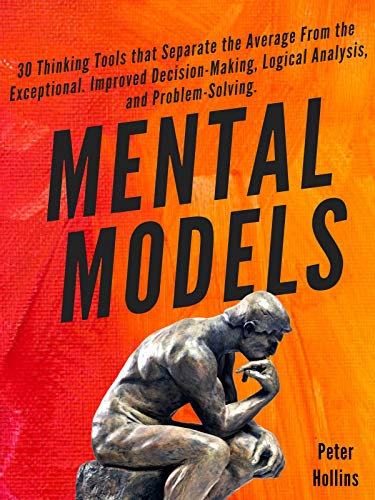This post is part of the 📖 Mental Models series.
Today, I am reading the second mental model Visualize All the Dominoes from Decision-Making for Speed and Context chapter of the book Mental Models written by Author Peter Hollins.
Mental Models are like giving a treasure map to someone lost in the woods. They provide instant understanding, context, and most importantly, a path to the end destination. Now imagine having such a map for all problems and decisions in your life.
In this book Mental Models, author Peter Hollins discuss 30 mental models that billionaires/CEOs, Olympic athletes, and scientists use to think differently and avoid mistakes.
Battle information overwhelm, focus on what really matters, and make complex decisions with speed and confidence.
Yesterday, I finished reading the first mental model Address “Important”; Ignore “Urgent”.
Chapter #1: Decision-Making for Speed and Context
Mental Model #2:
Visualize All the Dominoes
Use to make decisions that are as informed as possible.
We perceive most of our everyday decisions as isolated situations that don’t have a ton of consequences, positive or negative.
Many of our decisions, especially the ones we toss and turn over at night, have consequences that extend beyond what we can see right before us.
We practice a disturbing lack of foresight daily because that’s how we’re biologically wired as humans, and yet our instincts don’t serve us very well here.
This is generally known as first-order thinking. It is where we focus exclusively on resolving a question or decision at hand and don’t consider the more long-lasting ramifications or how our decision will play out in the distant future.
If it helps, call it first-domino thinking.
We need a different approach and thinking. i.e. second-order thinking.
Second-order thinking has the usual effect of making you think twice about what you’re doing. It helps eliminate rash decisions, as you might expect when considering the prolonged aftermath of your choices.
Don’t stop your analysis once the most obvious situations are articulated.
Instead, you consider as many long-term possible ramifications as you can.
How will your decision cause other dominoes to fall?
If you tip this domino, which other dominoes will you be unable to tip because of time or effort (opportunity cost)?
The fact is, second-order thinking allows you to think clearly—at least more clearly than your competition. Most of the time that matters.
Ask yourself
- What are the chances that I will succeed or be right?
- What does everybody else think?
- How is what I think differently from everyone else?
- What dominoes do other people visualizing falling?
Remember, this mental model’s purpose is to expose and inform. We can’t circumvent our human instinct of jumping to conclusions and deciding on a whim entirely, but we can be more methodical about decision factors.
Key Takeaways
While making decisions, don’t stop your analysis once the most obvious situations are articulated. Consider second-order thinking. Consider as many long-term possible ramifications as you can.
Adopting the second-order thinking mental model will improve your decision-making and stop letting things slip through the cracks.
Summary
- Visualize All the Dominoes: Don’t stop your analysis once the most obvious situations are articulated. Consider as many long-term possible ramifications as you can. Think twice about what you’re doing, and it helps to eliminate rash decisions.
That’s it for today. Tomorrow, we will read the third mental model Make Reversible Decisions, use to strategically remove indecision whenever you can and have an action bias.
Address “Important”; Ignore “Urgent”
Identify and address important tasks, ignore urgent tasks. Delegate important but non-urgent task and delete not important and not urgent tasks.
Visualize All the Dominoes
Don’t stop your analysis once the most obvious situations are articulated. Consider as many long-term possible ramifications as you can. Think twice about what you’re doing, and it helps to eliminate rash decisions.
Author(s): Peter Hollins
Part 3 of 29 in the 📖 Mental Models book series.
Series Start | Mental Models - Day 2 | Mental Models - Day 4
